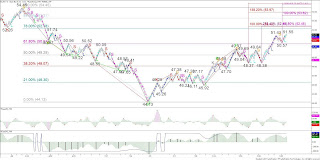All participants from traders, investors, to producers in the volatile energy markets such as natural gas, fuel oil, crude oil, and other refined products, count on technical trading indicators since these indicators allow them to time trades. Even investors oriented to underlying fundamentals can take advantage, by knowing about the mechanics of technical indicators, letting them form realistic opinions on new and existing trades.
Technical analysis typically reproduces what markets know about themselves, along with what is being indicated in price and on charts. The information obtained, lets the Kase StatWare pinpoint patterns and show it as clear, color-coded signals on the charts, that are easy to monitor and decipher. The trading signals allow the user to learn a trend’s direction & strength. Primarily, the technical indicators allow forecasting the direction of future prices.
Moreover, these Trend Indicators enable you to pick out trend reversals. Meaning, you are able to recognize when a trend has ended and a move in the reverse direction is happening. So, they actually allow you to find the reversals in a commodity’s price direction.
Technical analysis typically reproduces what markets know about themselves, along with what is being indicated in price and on charts. The information obtained, lets the Kase StatWare pinpoint patterns and show it as clear, color-coded signals on the charts, that are easy to monitor and decipher. The trading signals allow the user to learn a trend’s direction & strength. Primarily, the technical indicators allow forecasting the direction of future prices.
Trading Indicators Tell The Direction Of Future Prices
The technical trend indicators typically allow one to ascertain the direction and strength. These indicators use price averaging to set down a baseline - as price moves above the average it’s deemed as a Bullish trend, and as prices move below the average it flags a Bearish trend. These Trend indicators allow the market participants to determine when to enter and exit a trade.Moreover, these Trend Indicators enable you to pick out trend reversals. Meaning, you are able to recognize when a trend has ended and a move in the reverse direction is happening. So, they actually allow you to find the reversals in a commodity’s price direction.





